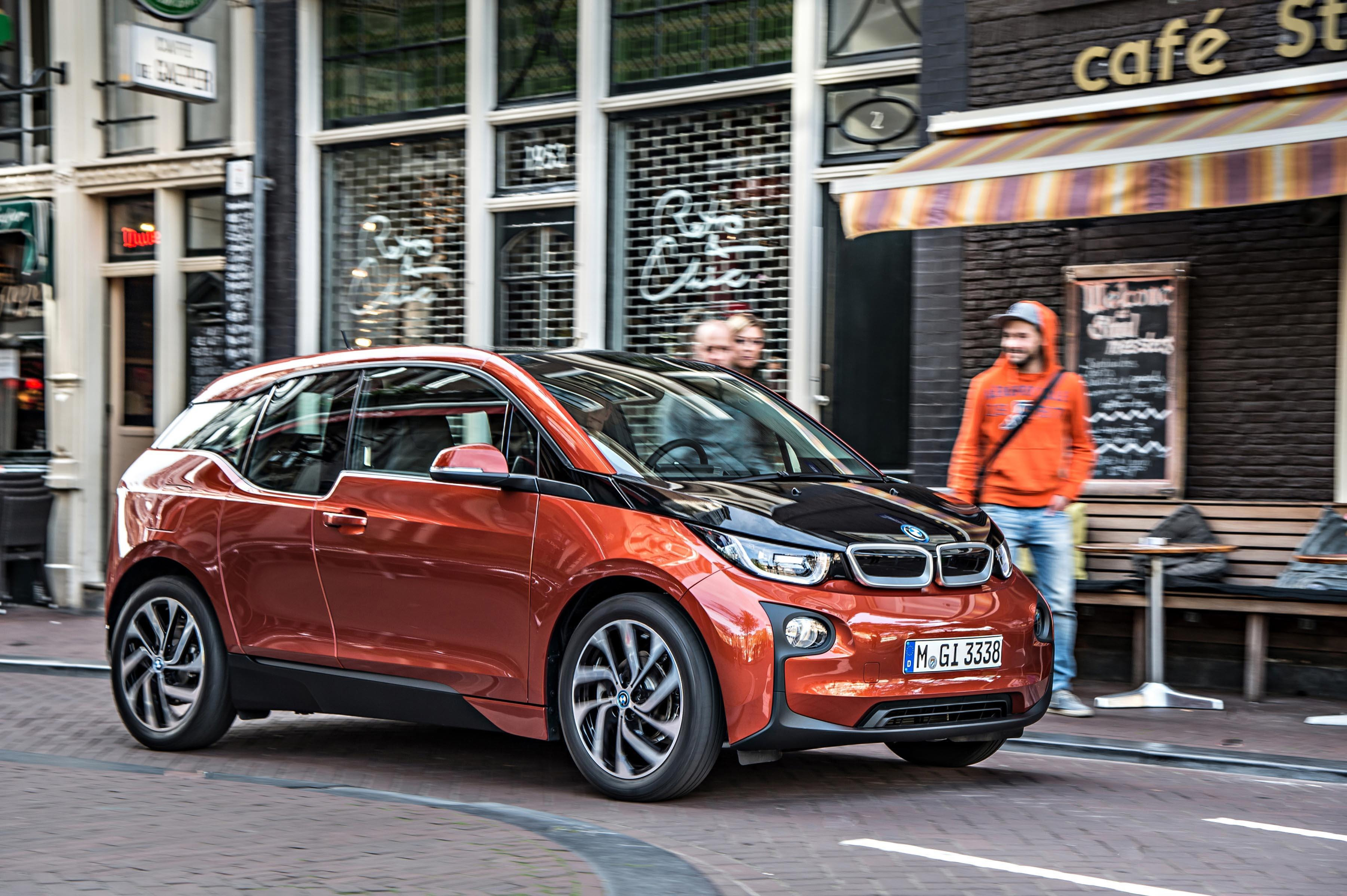Electrifying driving – BMW i3
Iain Dooley gets behind the wheel of BMW’s i3
THE i3 is a big deal, not just for BMW but also for the electric car industry. Boasting an innovative approach to design, construction and its underlying technology, this could be the car to give the electric car market the shot in the arm it needs to make the move from niche to mainstream status.
To date, early adopters have helped drive interest in electric transport. BMW is clearly keen to tap into this buyer demographic; witness the i3’s futuristic looks and the car-maker’s efforts at community building with a comprehensive smartphone app that can remotely monitor your pride and joy.
The bottom line is a carbon composite shell wrapped in funky-looking panels and room for four inside the radically styled – by current standards – cabin. Wood trim blends surprisingly well with the car’s exposed composite shell and the liberal use of natural fibres for door panels and the top of the fascia.
Still, this window dressing would all be for nought if the i3 failed to deliver the goods in the real world. Thankfully it’s not, as the electric BMW offers possibly the most rounded driving and ownership experience to date. Granted, progress is rapid in the electric car sector, but the i3 behaves more, well, car-like than most.
Interestingly, BMW has retained its trademark rear-wheel drive layout for the i3. At a whisker under four metres, it’s a genuine compact car, and this is reflected in its agility around town and its Black Cab-rivalling turning circle. The i3’s narrow section tyres also play a part, plus they contribute towards the car’s slippery aerodynamic properties.
With BMW’s clean-sheet approach to design comes the ability to place the batteries, a 230kg slab of lithium-ion power, under the car’s flat floor. This ensures maximum occupant space in the cabin, a decent size boot and a positive effect on the car’s handling. The 170 horsepower electric motor also plays a significant part in the i3’s overall performance.
And you can’t talk about batteries without covering the practicalities of range. BMW previously conducted detailed research with volunteers and fleets of electric 1 Series and Mini models to observe driver behaviour. As you’d expect, although the mainly urban journeys were frequent, they were short. With that in mind, a real world range of around 100 miles isn’t so bad.
Although different eco-centric driving modes can be selected to maximise driving range, the i3’s in-built brake regeneration properties can return a meaningful amount of charge to the battery over the course of a journey.
You need to lay off the brake pedal though, as simply easing off the throttle at urban speeds is enough to bring the i3 to a steady yet prompt halt. While that’s happening, the i3’s battery is getting a small but useful top up. Conversely, lean hard on the throttle and you can experience a 1 Series diesel level of brisk acceleration.
The ability to drive almost exclusively using just one pedal aside, the i3 delivers a surprisingly conventional driving experience. Largely familiar controls, a lofty driving position, good visibility and a high level of refinement go a long way to justifying the car’s premium price tag and ensuring its place within the BMW family.
Of course, the financial aspect of the car should be equally appealing. The absence of road tax and fuel liabilities rank high alongside the ability to charge the car for very little – overnight via a domestic electricity supply, and a matter of hours when connected to a high output wall box or public recharging point.
Okay, so the i3 isn’t a cheap proposition, but it’s a compelling one for savvy early adopters keen not just to make a statement but also to exploit the car’s considerable on-road talents. Range aside the ownership experience presents few compromises worth noting. While electric cars are still viewed as a gamble by many, BMW’s clean-sheet approach with the i3 could pave the way for wider acceptance.
FACTS AT A GLANCE
Model: BMW i3, from £25,680 on the road including £5,000 government grant.
Engine: electric motor developing 170bhp.
Transmission: single speed transmission as standard, driving the rear wheels.
Performance: Maximum speed 93mph, 0-62mph 7.2 seconds.
Economy: approximate range of 80-100 miles per charge.
CO2 Rating: 0g/km.
Latest posts by Sally - Silversurfer's Editor (see all)
- 10 Money saving tips for gardeners - April 21, 2024
- Should smacking a child be banned in England and Northern Ireland? - April 17, 2024
- Enjoy the best of the UK on a Shearings coach holiday - April 17, 2024
- Blueberry & Lemon Curd Bread and Butter Pudding - April 16, 2024
- Navigating the World with What3Words: A Lifeline for Older Generations - April 15, 2024





















